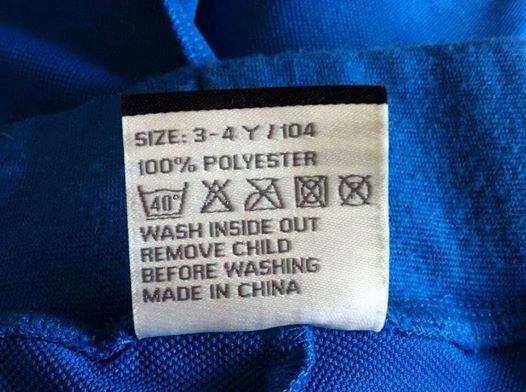This was in a newsletter I recently received and shows that when writing content and then revising that content, it is important to actually read what it says once edits are done.

This was in a newsletter I recently received and shows that when writing content and then revising that content, it is important to actually read what it says once edits are done.

My sister sent this to me from a recent shopping trip. A quick look by someone should have caught that this deal was no deal.


Copyright: ivelinradkov / 123RF Stock Photo
As I’m getting back into the blogging swing, we’ll catch up with some random information this week.
Professional and Personal Titles. When using a professional title, do not use a personal title. For instance, Mr. John Jones, Esq. is incorrect. So is Dr. Julie Smith, M.D. Choose one or the other.
Plurals of Personal Titles. When addressing more than one person, you can pluralize the titles.
Pages and lines. When you are referring to pages and/or lines in another document, you use “p.” for one page or “pp.” for multiple pages and “l.” for one line and “ll.” for multiple lines. Always pay attention to the range of your citation. If you are citing to a deposition excerpt at pages and lines 13:15-15:20, it would be pp. 13:15-15:20. Sometimes the writer will start with one page and just use “p.” everywhere, but if the citation is to multiple pages, you should change it.
Periods With Contractions. Do not use a period after a contraction. For instance, in my recent travels, I saw a sign for a national park that said “Nat’l. Park.” That is incorrect. “Nat’l” is a contraction for “National,” not an abbreviation, so it should not have a period at the end.
Signing Letters and Emails. When a non-attorney is using a signature block in a letter or an email, they should always include their title, i.e., Legal Assistant, Paralegal, etc., so the recipient knows that the communication is not from an attorney.
That is enough randomness for now. If you have random questions, leave a comment below and watch for the response in an upcoming post.
With apologies for the hiatus–work and life got in the way–but now I’m back and attempting to get back on schedule! Part of my time recently has been driving back and forth to Albuquerque to pick up and then drop off three of the grandchildren for a visit with their cousins (and us . . . when they had to) in the Phoenix area. The first trip over, I saw this sign near Gallup but was not ready with camera in hand to capture the picture. The second trip over I was ready. There are a couple of possibilities for this error. First, it could just be a case of extremely factual advertising or, second, they could have left a letter out. I’m guessing it is the latter because the fact that you charge for wi-fi when the other 30 signs for other hotels within a mile or two of this sign all tout free wi-fi seems a little like not really wanting the business. I’m anxiously awaiting my next trip because I saw a sign on the way back that I wasn’t ready for . . .

Close . . . so close . . . Happy Independence (or Independent’s) Day to all!

Sent to me by a friend in California. I hope nacho “topings” are as tasty as nacho “toppings”! 
Sometimes people near very clear and detailed washing instructions.


Image credit: nasirkhan / 123RF Stock Photo
One of the blog readers had a great question on the last post about numbers. I should have made it clear that in legal agreements and pleadings, using both words and figures for numbers leaves out any doubt about what number you are talking about–UNLESS there is an error in either the word or the figure version of the same number, so proofread those numbers carefully. For instance, when stating an amount of money, number, or a percentage in a legal document, you should write out the amount in words and then include the figures in parentheses.
Buyer agrees to pay Seller the sum of Fifty Thousand Dollars ($50,000.00) upon the signing of this Agreement, fifty percent (50%) of the remaining balance thirty (30) days after the date of this Agreement, and the entire remaining balance sixty (60) days after the date of this Agreement.
When you use both words AND figures in this way, it is absolutely clear and leaves one less thing to be litigated later. Thank you to Kim for asking the question to allow me to clarify.

Copyright: iqoncept / 123RF Stock Photo
A quick post this week about numbers. Here are a few rules:
These are the simple rules regarding numbers. If you have other questions about numbers or questions about other proofreading topics, please let me know at proofthatblog@gmail.com.
I received this when I last took my car in for service. At least they were consistent.
